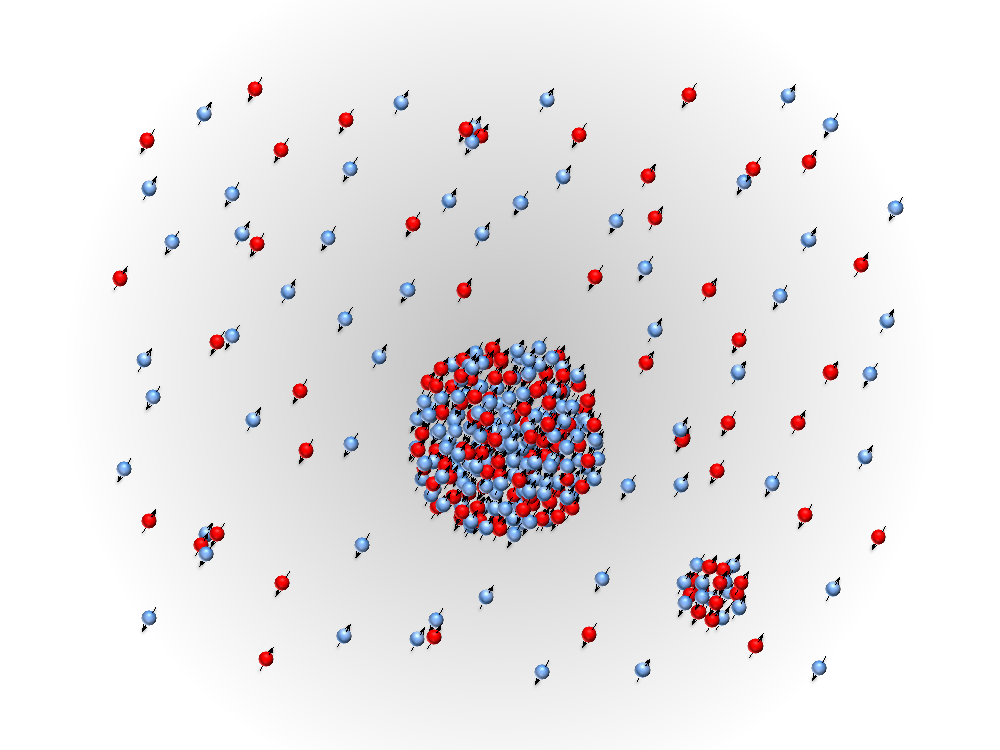Hot nuclear matter
In recent years much progress has been made on fully microscopic calculations of the structure of atomic nuclei. Unfortunately, most of these calculations rely on computational strategies that are not designed for calculations at nonzero temperature. One of the few exceptions is Monte Carlo lattice simulations of protons and nucleons with interactions prescribed by effective field theory. Effective field theory is a theoretical framework for sorting interactions according to their importance at low energies. Nuclear lattice simulations have been used previously for calculations of nuclear structure, scattering, and reactions. While there have been several prior publications on thermodynamics using nuclear lattice simulations, the heavy computational burden made calculations impractical for systems with many nucleons.
In “Ab initio nuclear thermodynamics” by Lu, Li, Elhatisari, Lee, Drut, Lähde, Epelbaum, and Meißner, the authors introduce a new method called the pinhole trace algorithm to compute the thermodynamics of nuclear matter starting from microscopic interactions of the protons and neutrons. The pinhole trace algorithm performs the thermodynamics calculations at fixed particle number, in contrast with prior simulations at indefinite particle number in the grand canonical ensemble. As a result, the pinhole trace algorithm provides a computational speedup as large as a factor of one thousand over existing Monte Carlo lattice algorithms.
The work was led by Bing-Nan Lu, who was a postdoc at FRIB until August 2020. The work was a collaboration of theorists at FRIB with Karamanoglu Mehmetbey University, University of North Carolina at Chapel Hill, University of Bonn, and Forschungszentrum Jülich. Using nuclear lattice simulations, they determined the line of liquid-vapor coexistence, the liquid-vapor critical point, and the temperature and density dependence of nuclear clustering. The new approach gives detailed information about the spatial correlations of protons and neutrons and the size of nuclear fragments as a function of temperature and density.
https://journals.aps.org/prl/abstract/10.1103/PhysRevLett.125.192502




